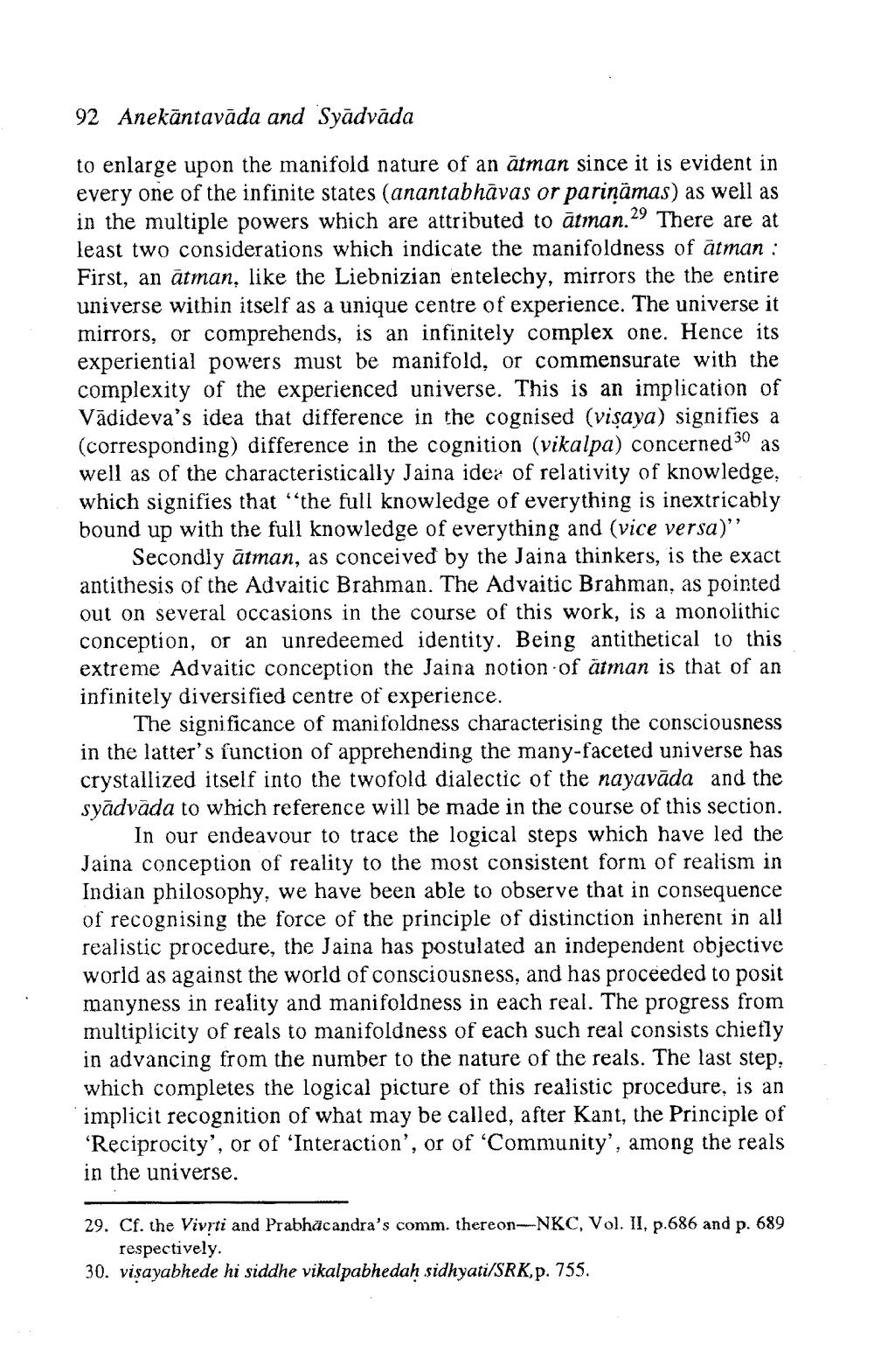________________
92 Anekāntavāda and Syādvāda
to enlarge upon the manifold nature of an ātman since it is evident in every one of the infinite states (anantabhāvas or pariņāmas) as well as in the multiple powers which are attributed to ātman.29 There are at least two considerations which indicate the manifoldness of ātman : First, an ātman, like the Liebnizian entelechy, mirrors the the entire universe within itself as a unique centre of experience. The universe it mirrors, or comprehends, is an infinitely complex one. Hence its experiential powers must be manifold, or commensurate with the complexity of the experienced universe. This is an implication of Vadideva's idea that difference in the cognised (vişaya) signifies a (corresponding) difference in the cognition (vikalpa) concerned 30 as well as of the characteristically Jaina idea of relativity of knowledge, which signifies that “the full knowledge of everything is inextricably bound up with the full knowledge of everything and (vice versa)"
Secondly ātman, as conceived by the Jaina thinkers, is the exact antithesis of the Advaitic Brahman. The Advaitic Brahman, as pointed out on several occasions in the course of this work, is a monolithic conception, or an unredeemed identity. Being antithetical to this extreme Advaitic conception the Jaina notion of ätman is that of an infinitely diversified centre of experience.
The significance of manifoldness characterising the consciousness in the latter's function of apprehending the many-faceted universe has crystallized itself into the twofold dialectic of the nayavāda and the syadvada to which reference will be made in the course of this section.
In our endeavour to trace the logical steps which have led the Jaina conception of reality to the most consistent form of realism in Indian philosophy, we have been able to observe that in consequence of recognising the force of the principle of distinction inherent in all realistic procedure, the Jaina has postulated an independent objective world as against the world of consciousness, and has proceeded to posit manyness in reality and manifoldness in each real. The progress from multiplicity of reals to manifoldness of each such real consists chiefly in advancing from the number to the nature of the reals. The last step, which completes the logical picture of this realistic procedure, is an implicit recognition of what may be called, after Kant, the Principle of Reciprocity', or of 'Interaction', or of Community', among the reals in the universe.
29. Cf. the Vivyti and Prabhäcandra's comm. thereon-NKC, Vol. II, p.686 and p. 689
respectively. 30. visayabhede hi siddhe vikalpabhedah sidhyati/SRK, p. 755.




